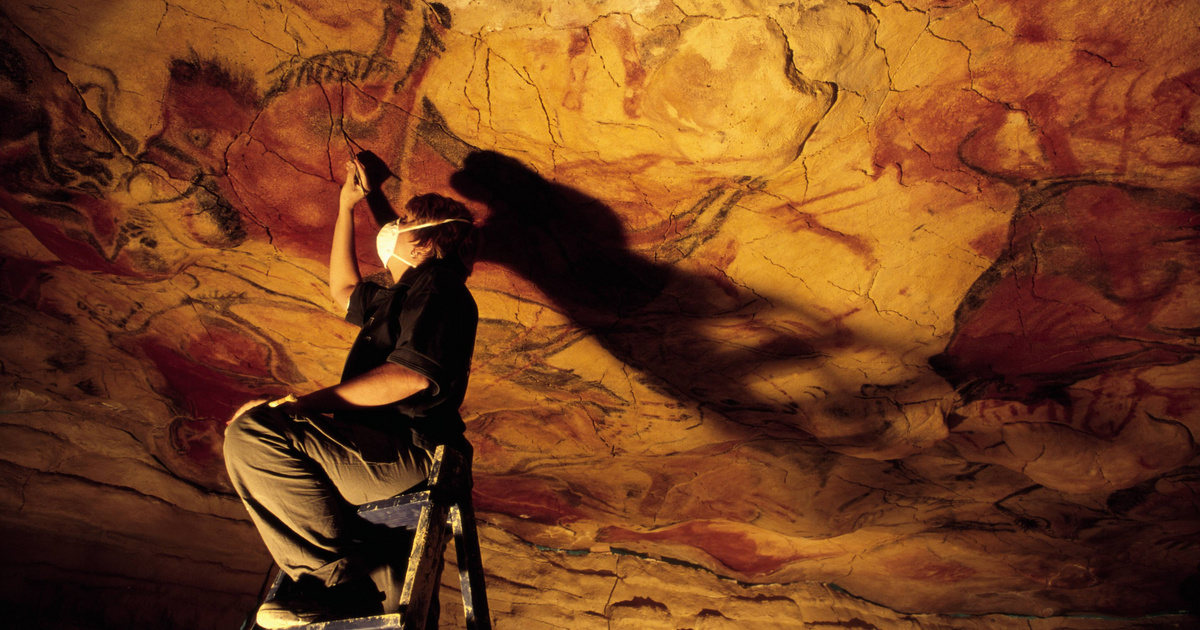Is a chef's knife with a carved handle or a large, polished ball-shaped stone really evidence of creativity? Can we infer the cognitive abilities of our ancestors from early art? Did the area of our brain responsible for creativity behave in the same way long ago as it does today?
Art is an expression of our thoughts, emotions, intuition and desires, a means of communication and a way of understanding the world. Artistic creativity can express love, fear, pain, or even conflicts, and our ancestors had a role in that, as they had something to carve and carve.
According to what has been envisioned so far, it is the oldest work of plastic art in 2017 Discover A 45,500-year-old Indonesian cave depiction of three pigs, but abstract representation appeared much earlier. Hundreds of thousands of years ago, parallel lines, grids and circles were carved into cortex and bone, yes, but archaeologists are still debating whether they can be considered art.
New published in LiveScience Stady According to seashells decorated with zigzag patterns dating back 500,000 years, which were found on the island of Java, they are the first evidence of abstract art. these Homo erectus But similar abstract patterns have been found in caves in Germany, where 51,000-year-old L-shaped patterns were discovered etched into deer bones. The fact that the carvings are precisely and regularly placed in the bone is evidence of conscious artistic creativity.
But these numbers dwarf the 2.5-10 cm long limestone or sandstone balls dated to about 1.4 million years ago. compared toWhich was found in Israel. maybe Homo habilis He imagined the abstract shape of the ball and tried to successfully create it by carving it out of stone, but there is also an assumption that the balls were randomly formed into a regular shape, because they were used as road pads and were formed into a smooth round shape as a result of blows.
The only unicorn
Einhornhole Cave, the site of the only rhino, is located in central Germany – which is of course not true, but it appears every few years on the Internet with the ridiculous photo, which attempts to prove that rhinos actually exist, with the strange rhino standing in the Natural History Museum in Magdeburg. There's just one problem, the skeleton is a contraption made from the bones of a woolly rhinoceros, narwhal, and woolly mammoth. Seventeenth-century Prussian naturalist Otto von Guericke Made by The collection of bones was not called a rhinoceros out of malice, but because in the seventeenth century the woolly rhinoceros was not yet known to science, what could it be but a rhinoceros?
But the Unicorn Cave is not only interesting, the finger bone of a giant deer was also found here, which was not native to this area. The people who lived here could have brought it here from further north, perhaps because it had already been processed and had meaning to them: several large grooves were carved obliquely into the surface of the bone, creating a relief pattern. Radiocarbon dating of the bones showed that the deer lived about 51,000 years ago, when Neanderthals inhabited Unicorn Cave. This bone is the oldest symbolic artifact.
According to archaeologists, the inscription may have been used to communicate with other members of the group, or with spirits and gods.
Pendants and mammoths
But jewelry is also evidence of creativity and art. 130,000-year-old eagle claw pendants in Croatia they foundIts wear is indicated by its handling and polishing. They were made by Neanderthals long before their appearance Homo sapiens He was going to reach Europe.
75,000-year-old cave sculptures in France show a shape composed of disembodied lines and dots, so it is certainly a mystery whether for artistic or other purposes. Were they ready?.
For a long time, archaeologists thought just that Homo sapiens He is intellectually advanced enough to create because he already had symbolic thinking. A wonderful example of this is the intricate works of woolly rhinos, mammoths, bison and bears painted on the walls of Chauvet Cave in France 35,000 years ago.
Archaeologist Derek Hodgson, a researcher in cave art, believes that early man's artistic sense developed when he began making stone tools.
Could it be that the impractical creativity began with simple coincidences, or the birth of two parallel lines they liked, or a rounded shape they wanted to replicate for their own aesthetic pleasure? Admiring a creation or artwork we like causes happiness, and several areas of our brain are activated during both processes. Thus, it would not be surprising if simple patterns, lines, and dots turn out to have been intentional works of art and sources of joy for our ancestors.
(Cover Image: Working on a replica of Altamira Cave. Photo: Luis Davila/Cover/Getty Images)














































